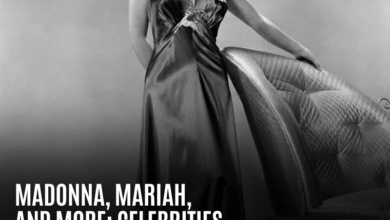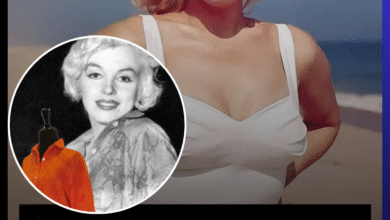Marilyn Monroe’s Heartfelt Confession: Why She Hated Being Objectified as a Sex Symbol
OPINION: This article may contain commentary which reflects the author's opinion.
Marilyn Monroe, born Norma Jeane Mortenson, was one of the most iconic figures of 20th-century pop culture. From a factory worker in Los Angeles to a global sensation, her transformation into Hollywood’s quintessential sex symbol marked the rise of an era. With her platinum blonde hair, breathy voice, and curvaceous figure, Monroe became the embodiment of beauty, desire, and glamour. However, despite her fame and undeniable allure, Monroe was never entirely comfortable with her status as a sex symbol.
The Early Years and the Creation of Marilyn Monroe
Monroe’s rise to stardom was as much about reinvention as it was about her raw talent. After years of struggling to make a name for herself, she was discovered as a model and soon became a pin-up sensation, gracing magazine covers and capturing the public’s imagination. Her beauty and charisma led her to Hollywood, where she signed an acting contract, changed her name, and transformed her appearance with the iconic platinum blonde hair that would become her signature.
While she began with minor roles in the late 1940s, it was during the 1950s that Monroe truly became a cultural force. Films such as Some Like It Hot and The Seven Year Itch showcased her comedic talent and charm, but her roles often emphasized her sex appeal. Typecast as the “dumb blonde” with little substance beyond her looks, Monroe struggled to break free from the objectifying roles that defined much of her early career.
Typecasting and the Objectification of Monroe
Monroe was often portrayed as little more than a pretty face and a body for male fantasy. Her most famous image—standing over a subway grate in a white dress, the fabric billowing upwards—is one that has been endlessly reproduced, reinforcing the idea that she was a woman defined by her sex appeal.
Despite her undeniable acting talent, Monroe was often relegated to roles that centered on her physical beauty rather than her skills. She became synonymous with the term “sex symbol,” and for many, her image overshadowed her work on screen. This public perception weighed heavily on her, as she felt trapped by the very thing that made her famous.
Monroe’s Struggle with the “Sex Symbol” Label
In an interview with Life Magazine‘s Richard Meryman, Monroe addressed her complex feelings about her sex symbol status. “I never quite understood it, this sex symbol,” she said. “I always thought symbols were those things you clash together! That’s the trouble, a sex symbol becomes a thing. I just hate to be a thing.”
Monroe’s discomfort with being reduced to a symbol was clear. She did not want to be objectified or seen merely as an ornament to be admired. Despite this, she admitted that if she had to be a symbol of anything, she would prefer to be seen as a symbol of sex rather than some of the other, less flattering things that people might associate with symbols. “If I’m going to be a symbol of something, I’d rather have it sex than some other things they’ve got symbols of!” she acknowledged, though it’s evident that even this admission was tinged with reluctance.
The Desire for Recognition Beyond Appearance
Monroe longed for recognition for more than just her looks. She wanted to be valued for her skills, her humor, her kindness, and the effort she put into her work. “It’s nice to be included in people’s fantasies, but you also like to be accepted for your own sake,” she explained. Monroe was not just a pretty face; she was an actress who had worked tirelessly to build her career, and yet she was often seen as nothing more than a commodity.
In the interview, she shared her frustration with the way she was sometimes treated, reflecting on how her fame had led to invitations to events where she was viewed more as an accessory than as herself. “Sometimes I’m invited places to kind of brighten up a dinner table like a musician who’ll play the piano after dinner, and I know you’re not really invited for yourself. You’re just an ornament,” she said, highlighting the superficial way in which she was often treated by those around her.
A Legacy Beyond the “Blonde Bombshell”
Despite her struggles with the sex symbol label, Monroe’s legacy has endured far beyond her image. She is remembered as a multifaceted actress who brought both vulnerability and strength to her roles. Her comedic timing in Some Like It Hot and her poignant performance in The Misfits proved that she was much more than the archetypal “dumb blonde” persona she was often cast in.
Today, Monroe’s legacy is celebrated not just for her beauty but for her ability to navigate the complexities of fame in a way that few others could. She remains an icon, not simply because of her looks, but because of her humanity, her wit, and her depth as an actress.
Conclusion
Marilyn Monroe’s story is one of both triumph and tragedy. While she became one of the most iconic sex symbols of all time, she was never fully comfortable with this label. She longed for recognition beyond her appearance and resented being reduced to a mere symbol. Yet, her struggle to be seen as more than just a pretty face only added to her allure. In the end, Monroe’s legacy is a testament to her strength, resilience, and the complexity of her character—a woman who never quite understood her status but still managed to become an unforgettable part of Hollywood history.



